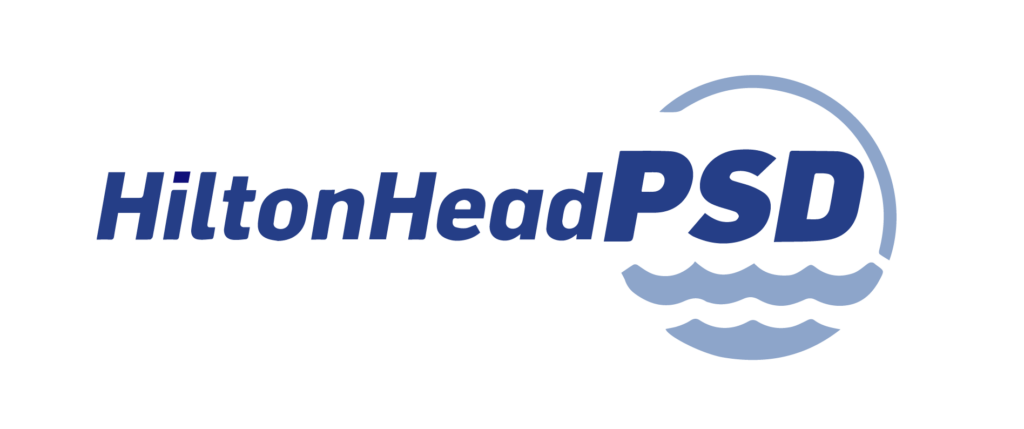Frequently Asked Questions
Customer Service FAQs
Our offices are open 8:00 a.m. through 4:00 p.m., Monday through Friday. Our night drop box is available 24 hours every day for your convenience. Payments will be processed following business day. Please be advised: If your water service is shut off due to non-payment, you must contact Customer Service (843-681-5525) during normal business hours (8 a.m. to 4 p.m. M-F) to confirm your payment and have your service restored. PSD on-call service technicians cannot verify online payments in order to restore your service after hours.
All of the water meters that the District installs are warrantied for accuracy by the American Water Works Association (AWWA) and the American National Standards Institute (ANSI).
While the District may be able to assist a customer in determining how much water is being used and at what time of day, it is ultimately the customer’s responsibility to find the source of perceived high water usage on their premises.
The District is not responsible for demonstrating to a customer where or how they are using water on their premises. The District offers a complimentary customer water usage portal that may assist you in monitoring your usage and allows you to set alerts if you go on vacation or if you use more than a specified amount of water in a timeframe you set. The customer usage portal can be found here.
Weather conditions, the location of the meter, the age of the meter, objects placed over meters, and various other factors can hinder the District’s and the customer usage portal’s ability to provide hourly usage data. This does not negate the customer’s responsibility to pay for all water usage that flows through the meter.
Possible reasons for what you may consider to be a high bill include the following:
- Irrigation. This is the most common reason for high water consumption. Regular watering of your lawn or garden uses a substantial amount of water. Abnormally hot and dry weather or additional watering of new or altered landscaping on your property can result in even higher water consumption. Irrigation systems vary widely in water efficiencies. One system can use vastly more water than another system.
- A change in your water use pattern. Frequent visitors, new appliances, filling your home pool, power washing, and other home construction projects can substantially affect your bill.
- More accurate readings due to a new meter. When we replace older meters with newer meters — which we try to do every 10 years — you may have higher water and sewer charges as a result of having more accurate readings.
- A leak on your side of the water meter. Many households have some kind of plumbing leak, which can waste a surprising amount of water. The average leaky toilet can waste about 200 gallons of water per day. That’s over 6,000 gallons of water a month, and may potentially increase your bill by hundreds and even thousands of dollars. Toilets, water heaters, water softeners, in-line humidifiers and irrigation systems are common sources of leaks.
Any leaks on the customer side of the meter are the responsibility of the homeowner. The PSD is not responsible for locating or repairing any leaks on the customer side of the meter. If you believe you have a leak on your property, you should call your plumber as soon as possible. You are still responsible for all water used.
If you are unsure whether the leak is on your side of the meter, you may contact our customer service office and we will send out a technician to perform a leak check. However, as noted above, if this leak is on your side of the meter, the PSD cannot perform any repairs. The PSD is also not responsible for locating these leaks. If the source of the leak on your side of the property is not obvious to the PSD technician, you will need to contact your plumber to identify the leak.
If a leak is solely on the PSD’s side of the meter, the usage will not show up on your monthly bill.
If you determine you have a leak on your property’s side of the water meter, you must document to the PSD that you had the leak repaired, including all relevant dates. You must complete a leak adjustment form and comply with the District’s leak adjustment policy which can be found here.
After the completed leak adjustment form has been received and verified, the PSD will adjust the extraordinary usage on your bill to the lowest tier of rates for the dates relevant to the leak, regardless of the amount used. The courtesy leak adjustment adjusts all excess water usage to the lowest tier; it does not reduce your bill to its “normal” amount. It still costs the PSD the same amount to produce and provide water that is consumed in a leak as it does to provide water that is used for normal consumption. The amount of the adjustment will vary based on your individual circumstances but the courtesy adjustment generally amounts to around 30% of the high bill.
Your account must be current to receive a courtesy leak adjustment. The PSD does not issue refund checks for leak repairs. Instead, we will place a credit on your account.
Customers must pay the PSD installation fees for new construction or for requests to move existing meters. After initial installation, the PSD manages ordinary and routine meter repairs and replacements. The PSD may repair or replace any meter due to age or various other factors that can hinder the District’s ability to obtain appropriate usage data.
Property owners are responsible for protecting their water meters and ensuring that they are not damaged by landscaping equipment, vehicles, or negligence. Property owners may also be responsible for replacement of the meter if it damaged, tampered with or is illegally removed.
Property owners are also responsible for keeping their meters clean and clear. Meters should never be covered or obstructed in any way. Bushes and other landscaping should never cover or obstruct access to water meters. Landscaping that obstructs access to the meter will be removed.
The PSD will return an account to the property owner’s name after a renter has moved out, because it must continue to charge base charges on the account. The fixed expenses that must be recovered through the base rate do not disappear when a renter moves out. If the home will be vacant for a period of time, you may request to have the water to the home turned off but you will be subject to a reconnect charge when the water is turned back on.
Every home should have a water shut off valve. Everyone in your home should know where this is located. The main valve (usually with a wheel-type handle) normally is located either on the customer side of the meter box or just outside the point where the service line penetrates the foundation of the house. It will generally be in line with your water meter, which is usually located near the edge of your property line near the street. A shut off value that is located at the foundation of your home may not turn off water to the exterior of your home including irrigation systems.
If your home does not have a water shut off valve, you should contact your plumber and have one installed.
Not having a shut off valve or not knowing the location of your shut off valve can lead to costly water usage in an emergency or leak situation and delays in repair and maintenance of household fixtures that utilize water.
Some homes may also have a water shut-off valve located in the garage. Bear in mind that closing such a valve will turn off water to the interior of the home, but not the exterior which includes irrigation systems. Similarly, some homes may have a shut-off value that only turns off water to an irrigation system but does not turn off water to the interior of the home.
Yes, you must pay the bill until such time as the PSD receives formal verification of foreclosure from you or your attorney.
The PSD does not issue refund checks for leak repairs. Instead, we will credit your account.
Renters should expect to receive a refund check within a month of the date upon which they closed out the account if a refund is due after the final billing is satisfied.
The PSD will add a name to an account if the individual who is being added provides the utility with their signature and Social Security Number. Requests to add individuals to accounts must be made in writing by the current account holder.
Yes; however, the PSD will accompany the billing history report with the dates upon which all names on the account were added to the account.
Any individual who is being dropped from an account must request to be dropped in writing, providing the PSD with their signature and Social Security Number.
Water Quality FAQs
The PSD has multiple water sources. The majority of our water is produced in our Reverse Osmosis Water Facility, which treats brackish groundwater from a 600-foot-deep aquifer. We purchase water on a wholesale basis from the mainland, and we also use freshwater wells that are approximately 150 feet deep.
The pink rings found in these locations are caused by an airborne bacteria called Serratia marcescens. It thrives in the moist, dark conditions often found in bathrooms. Serratia marcescens is not an indicator of poor water quality in the distribution system. Rather, the residue is thought to result from airborne bacteria and is also affected by a homeowner’s cleaning habits. There are several methods that homeowners can use to control the development of this pink residue. Products containing chlorine, such as common household bleach, will both remove and control the proliferation of Serratia marcescens. Also, keep bathroom fixtures dry and free of standing water, paying special attention to the rim underneath the toilet.
You may have noticed “black slime” growing around areas of your home that are often exposed to water, such as the faucet, sink, shower, or toilet. These microbes are airborne mold and/or fungal spores that are nearly ubiquitous in the very moist, subtropical Lowcountry climate. They grow in areas where they are frequently exposed to moisture – such as sinks and toilets and faucets! These microbes are NOT contained in the drinking water, but when they land in a place that is exposed to water they can grow quickly.
Please visit our Water Hardness page here for information about hardness levels near your home or business.
The PSD does not fluoridate our water; however, a small amount of fluoride naturally occurs in our water sources. The wholesale water the PSD purchases from the mainland is fluoridated in small amounts. Please visit our PSD Publications page here to find our Annual Water Quality Report, which contains the results of fluoride monitoring.

